- Home
- William Shakespeare
All's Well That Ends Well Page 2
All's Well That Ends Well Read online
Page 2
For twentieth-century critics, the main problem with the play was more a matter of genre and tone than of the morality of the central characters. It was suggested that there was an incongruity between the realistic characterization and the folktale or even fairy-tale plot:
Shakespeare transferred the Decameron story [the main source of his plot] from sunlight into shadow, not abandoning Boccaccio's naturalism, but making it problematic, turning its social and sexual givens into occasions for moral reflection and private anguish. As a result, character and motive become contradictory, and standards of judgement other than the right and natural claims of love make ironic and questionable the implications of the original.9
The plot contains strong folktale motifs, such as those that have been described as the Healing of the King, the Fulfillment of Tasks, and the Clever Wench. Some critics have accordingly suggested that this gives primacy to structure and plot over psychology and interior life. The play can be read as a "romantic fable" in which
the intrigues and deceptions of the plot are stressed. In order to bring out the traditional basis for the story, the movement of the play builds to three peaks, the cure of the King, the use of the bed-trick, and the redemption of Bertram. Each is accentuated as the fulfilment of a task which will lead to the resolution of the dilemma ... Since psychological motivation is relatively unimportant, the other characters fill out the play as stock figures.10
Yet at the same time, a much more hard-edged reading is possible:
Considered as the basis for a serious play, the plot may expose the moral problem of birth versus merit, the social problem which explores the legitimacy of female aggression, or the domestic problems of the unwanted wife ... If the play is regarded as satire, then cynicism infects the realism. The dark mood is established in the first scene by the stress on disease, old age and death.11
So it is that "the characterization of the major dramatic persons is at odds with the final tendency of the action, in which a tone of irony and often satire conflicts with the 'all's well' complacency implied by the fairy-tale elements, and in which a concrete, realistic presentation works at cross purposes with the romantic image of experience which the play seems trying to project."12
Such difficulties and variation in interpretation, and the perceived contradictions within both the action and the characterization, resulted in twentieth-century critics' identifying All's Well as one of Shakespeare's "problem" plays. This term was first used to describe the realistic dramas of the nineteenth century, those of Ibsen especially, that confronted controversial social issues by means of onstage debate, often with characters representing conflicting attitudes and points of view. The critic F. S. Boas, writing under the influence of Shaw, applied the term to All's Well, Measure for Measure, and Troilus and Cressida, three sex-charged plays that he thought shared an interest in social problems. Subsequent criticism applied the term more loosely, and corralled more Shakespearean plays within it, often emphasizing problems of form as well as content. All's Well and Measure for Measure in particular were seen as "problem comedies" because they did not conform to the supposed comic norm of a light touch and a happy ending. The related term "dark comedies" has also been used. So, for example, the ending was seen as a special problem. What were Shakespeare's intentions? Critics have fiercely debated "whether he meant Helena to be regarded as noble and admirable, or as a schemer and a harpy, why he blackened the character of Bertram and yet rewarded him at the end, and whether he meant the final reconciliation of Bertram and Helena to be taken as a prelude to future bliss, or ironically, as a union which must ultimately result in disaster."13
More recent criticism has continued to emphasize "problems" even as the terms of the debate have been converted into those of modern gender politics. The play has been especially amenable to analysis on these lines because it inverts the literary and dramatic norm whereby it is customarily the man who pursues the woman:
Helena has been a puzzle and provocation to critics because she occupies the masculine position of desiring subject, even as she apologises fulsomely for her unfeminine forwardness and works desperately to situate herself within the feminine position of desired object. Bertram, too, poses problems because he occupies the feminine space of the Other, even as he struggles to define himself as a man by becoming a military and sexual conqueror. He is the desired object, the end of the hero's--or in this case heroine's--gendered journey of self-fulfilment.14
By this account, Helen becomes one of Shakespeare's most interesting comic heroines, not least because she is given genuinely introspective soliloquies:
The intensity and extremity which have come to her from folktale ... combine with the quality of female self-containedness with which Shakespeare seems to have been more and more concerned in the mature comedies. And from the fusion of these two things there emerges a radically new comic heroine. For Helena is inward ... She is much given to secrecies and reticences.15
The richness of her interior life makes it surprising that the role has not been taken on by more of the major female actors of modern times.
It has long been recognized that the parallel between Bertram and Parolles is central to the structure of the play:
Both are "seemers." Grant this, and the whole sub-plot of the exposure of "Mr Words" has its place and point: Parolles is there to be stripped; and stripped at just the very moment when Bertram's fortunes reach their apogee (in his suppositious conquest of Diana) and begin to turn retrograde--towards his own exposure.16
With the advent of explicit feminism and the late twentieth-century war between the sexes, it became easier for critics and audiences to see not just the shadowing of Bertram in Parolles but also the broader parallelism between the sex plot and the war plot:
The shaming of Parolles runs counterpoint, in carefully matched scenes, to Bertram's attempt to seduce Diana and his own deception by the bed-trick ... Bertram is trying to satisfy sexual relations impersonally in terms of war, translating male aggression into promiscuity, in which sex is treated as the taking and possessing of a woman's "spoil," repudiating responsibility and abandoning the woman as soon as she has surrendered.17
The play's explicit concern with social mobility seems equally modern in its application. Northrop Frye, one of the great twentieth-century critics, argued that All's Well is almost the only Shakespearean play in which there is an explicit social promotion in the foreground of the action: "It is emphasized that Helena is below Bertram in social status, and that it takes direct intervention of the king to make her marriage possible. Such a theme introduces the conception of one's 'natural place' in society, the position for which one is fitted by one's talents and social function."18 Shakespeare perennially pitted old values and structures against new, perhaps especially so in the changed world of the first years of King James' reign, after old Queen Elizabeth's death in 1603. Northrop Frye again:
All's Well has a ... restless feeling of social change about it, with Bertram being pulled out of the cliches of family pride in the direction of Helena's still mysterious capacities, Helena herself advancing from the background of the Roussillon household to a primary place in it, the clown Lavache turning philosophical, and the captain Parolles becoming a licensed fool in Lafeu's train ... especially in Lavache's oracular speech, there is a faint whisper of the vision of social reversal ... The king remains the king, of course, but when the actor playing him goes out to ask for the audience's applause, his opening line is "The king's a beggar, now the play is done."19
The secular social and political order jostles against an ancient, more magical and providential, way of thinking, embodied by the virtues of the older generation, who constitute Shakespeare's most striking addition to his source in Boccaccio: "The character and moral weight Shakespeare gives [the King] strengthen the effects of the Countess and Lafeu as types of old nobility: surviving exemplars of a generation, or a world, which is passing away. He is a sadly nostalgic figure."20
The s
ense of a transitional moment between two worlds helps to explain the puzzling tone of the ending. Beside the tragic potential there are elements of magical restitution and regeneration akin to those in Shakespeare's late romances such as The Winter's Tale and Pericles. There is a progression from Helen's miraculous cure of the King to her own "resurrection" and the (apparent?) moral regeneration of Bertram. As the King comes close to death and Helen is supposed to have died but returns home to become a wife, so "Parolles, who blindfolded has heard the order for his own execution, discovers when his blindfold is removed--symbolically as well as actually--that he is not really going to be killed. Bertram, too ... is recalled from death in the course of the play."21 All's Well is a complex drama of both death and new life:
There is the current of self-wasting energy ... symbolized by Bertram's self-will, Parolles' lack of heroism, and Lavache's vision of the great mass of people drifting to the "broad gate and the great fire." There is also the reversal of this current of energy backward into a renewed and creative life. The play opens with older characters "all in black," talking mainly about the dead; it proceeds through the healing of an impotent king ... Helena rejuvenates the family, the king, and may even rejuvenate Bertram's fixated notions of family honour and tradition.22
Certainly the play offers an explicit challenge to its own title, the old comic idea of all's well that ends well:
From a "universal" point of view, we may see the dramatic world thrown into disorder and confusion by Helena's elaborate introduction of half-truths and then miraculously restored to order and sanity when Helena herself comes forward, returned from the dead, to dispense a spirit of love and charity. But even so, there is Bertram--deceitful, vindictive, petty--a very real and unpleasant fly in the ointment of universal forgiveness.23
But ultimately, in the words of John Barton, among the most critically astute of modern Shakespearean directors, " 'cynical' isn't quite the right word for the ending: the tone is more one of a worldly tolerance of people."24
ABOUT THE TEXT
Shakespeare endures through history. He illuminates later times as well as his own. He helps us to understand the human condition. But he cannot do this without a good text of the plays. Without editions there would be no Shakespeare. That is why every twenty years or so throughout the last three centuries there has been a major new edition of his complete works. One aspect of editing is the process of keeping the texts up to date--modernizing the spelling, punctuation, and typography (though not, of course, the actual words), providing explanatory notes in the light of changing educational practices (a generation ago, most of Shakespeare's classical and biblical allusions could be assumed to be generally understood, but now they can't).
Because Shakespeare did not personally oversee the publication of his plays, with some plays there are major editorial difficulties. Decisions have to be made as to the relative authority of the early printed editions, the pocket format "Quartos" published in Shakespeare's lifetime and the elaborately produced "First Folio" text of 1623, the original "Complete Works" prepared for the press after his death by Shakespeare's fellow actors, the people who knew the plays better than anyone else. All's Well That Ends Well exists only in a Folio text that is problematic in some aspects and suggests a rather difficult-to-read manuscript was used as printer's copy (see "Key Facts").
The following notes highlight various aspects of the editorial process and indicate conventions used in the text of this edition:
Lists of Parts are supplied in the First Folio for only six plays, not including All's Well That Ends Well, so the list here is editorially supplied. Capitals indicate that part of the name used for speech headings in the script (thus "BERTRAM, Count of Rossillion").
Locations are provided by Folio for only two plays, of which All's Well That Ends Well is not one. Eighteenth-century editors, working in an age of elaborately realistic stage sets, were the first to provide detailed locations ("another part of the city"). Given that Shakespeare wrote for a bare stage and often an imprecise sense of place, we have relegated locations to the explanatory notes, where they are given at the beginning of each scene where the imaginary location is different from the one before.
Act and Scene Divisions were provided in the Folio in a much more thoroughgoing way than in the Quartos. Sometimes, however, they were erroneous or omitted; corrections and additions supplied by editorial tradition are indicated by square brackets. Five-act division is based on a classical model, and act breaks provided the opportunity to replace the candles in the indoor Blackfriars playhouse which the King's Men used after 1608, but Shakespeare did not necessarily think in terms of a five-part structure of dramatic composition. The Folio convention is that a scene ends when the stage is empty. Nowadays, partly under the influence of film, we tend to consider a scene to be a dramatic unit that ends with either a change of imaginary location or a significant passage of time within the narrative. Shakespeare's fluidity of composition accords well with this convention, so in addition to act and scene numbers we provide a running scene count in the right margin at the beginning of each new scene, in the typeface used for editorial directions. Where there is a scene break caused by a momentary bare stage, but the location does not change and extra time does not pass, we use the convention running scene continues. There is inevitably a degree of editorial judgment in making such calls, but the system is very valuable in suggesting the pace of the plays.
Speakers' Names are often inconsistent in Folio. We have regularized speech headings, but retained an element of deliberate inconsistency in entry directions, in order to give the flavor of Folio. Thus BERTRAM is always so-called in his speech headings, but is often referred to as "Count of Rossillion," "Count Rossillion," or "Count" in entry directions.
Verse is indicated by lines that do not run to the right margin and by capitalization of each line. The Folio printers sometimes set verse as prose, and vice versa (either out of misunderstanding or for reasons of space). We have silently corrected in such cases, although in some instances there is ambiguity, in which case we have leaned toward the preservation of Folio layout. Folio sometimes uses contraction ("turnd" rather than "turned") to indicate whether or not the final "-ed" of a past participle is sounded, an area where there is variation for the sake of the five-beat iambic pentameter rhythm. We use the convention of a grave accent to indicate sounding (thus "turned" would be two syllables), but would urge actors not to overstress. In cases where one speaker ends with a verse half line and the next begins with the other half of the pentameter, editors since the late eighteenth century have indented the second line. We have abandoned this convention, since the Folio does not use it, nor did actors' cues in the Shakespearean theater. An exception is made when the second speaker actively interrupts or completes the first speaker's sentence.
Spelling is modernized, but older forms are very occasionally maintained where necessary for rhythm or aural effect.
Punctuation in Shakespeare's time was as much rhetorical as grammatical. "Colon" was originally a term for a unit of thought in an argument. The semicolon was a new unit of punctuation (some of the Quartos lack them altogether). We have modernized punctuation throughout, but have given more weight to Folio punctuation than many editors, since, though not Shakespearean, it reflects the usage of his period. In particular, we have used the colon far more than many editors: it is exceptionally useful as a way of indicating how many Shakespearean speeches unfold clause by clause in a developing argument that gives the illusion of enacting the process of thinking in the moment. We have also kept in mind the origin of punctuation in classical times as a way of assisting the actor and orator: the comma suggests the briefest of pauses for breath, the colon a middling one, and a full stop or period a longer pause. Semicolons, by contrast, belong to an era of punctuation that was only just coming in during Shakespeare's time and that is coming to an end now: we have accordingly only used them where they occur in our copy texts (and not always then). Dashes are s
ometimes used for parenthetical interjections where the Folio has brackets. They are also used for interruptions and changes in train of thought. Where a change of addressee occurs within a speech, we have used a dash preceded by a period (or occasionally another form of punctuation). Often the identity of the respective addressees is obvious from the context. When it is not, this has been indicated in a marginal stage direction.
Entrances and Exits are fairly thorough in Folio, which has accordingly been followed as faithfully as possible. Where characters are omitted or corrections are necessary, this is indicated by square brackets (e.g. "[and Attendants]"). Exit is sometimes silently normalized to Exeunt and Manet anglicized to "remains." We trust Folio positioning of entrances and exits to a greater degree than most editors.
Editorial Stage Directions such as stage business, asides, indications of addressee and of characters' position on the gallery stage are only used sparingly in Folio. Other editions mingle directions of this kind with original Folio and Quarto directions, sometimes marking them by means of square brackets. We have sought to distinguish what could be described as directorial interventions of this kind from Folio-style directions (either original or supplied) by placing them in the right margin in a smaller typeface. There is a degree of subjectivity about which directions are of which kind, but the procedure is intended as a reminder to the reader and the actor that Shakespearean stage directions are often dependent upon editorial inference alone and are not set in stone. We also depart from editorial tradition in sometimes admitting uncertainty and thus printing permissive stage directions, such as an Aside? (often a line may be equally effective as an aside or as a direct address--it is for each production or reading to make its own decision) or a may exit or a piece of business placed between arrows to indicate that it may occur at various different moments within a scene.

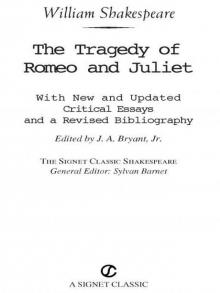 Romeo and Juliet
Romeo and Juliet As You Like It (Folger Shakespeare Library)
As You Like It (Folger Shakespeare Library)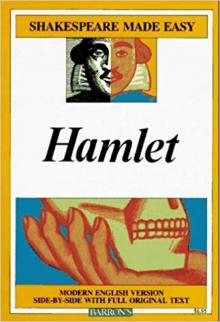 Hamlet
Hamlet Richard II (Folger Shakespeare Library)
Richard II (Folger Shakespeare Library)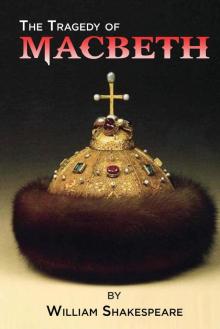 Macbeth
Macbeth Henry V
Henry V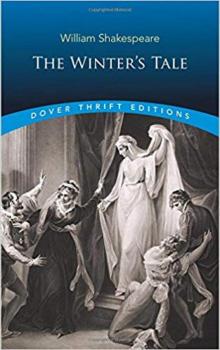 The Winter's Tale
The Winter's Tale The Taming of the Shrew
The Taming of the Shrew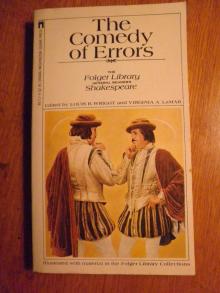 The Comedy of Errors
The Comedy of Errors King Lear (Folger Shakespeare Library)
King Lear (Folger Shakespeare Library)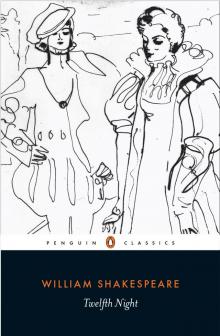 Twelfth Night
Twelfth Night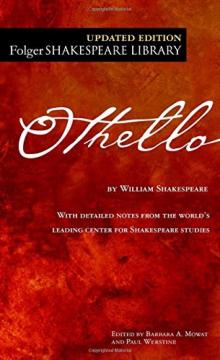 Othello
Othello The Two Gentlemen of Verona
The Two Gentlemen of Verona Henry IV, Part 1 (Folger Shakespeare Library)
Henry IV, Part 1 (Folger Shakespeare Library) King John/Henry VIII (Signet Classics)
King John/Henry VIII (Signet Classics)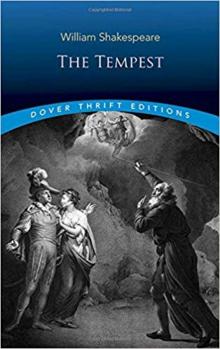 The Tempest
The Tempest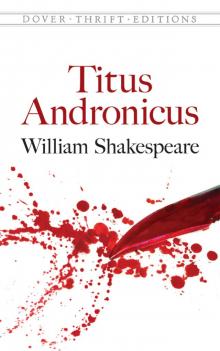 Titus Andronicus (Dover Publications)
Titus Andronicus (Dover Publications)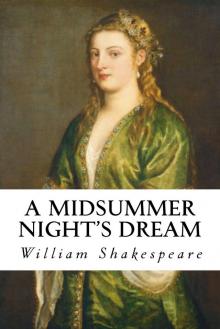 A Midsummer Night's Dream
A Midsummer Night's Dream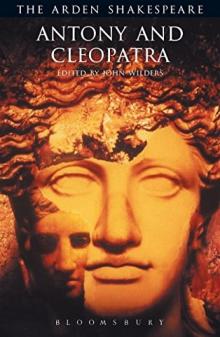 Antony and Cleopatra (Arden Shakespeare: Third Series)
Antony and Cleopatra (Arden Shakespeare: Third Series)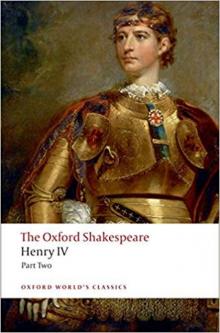 The Oxford Shakespeare: Henry IV, Part 2 (Oxford World's Classics)
The Oxford Shakespeare: Henry IV, Part 2 (Oxford World's Classics)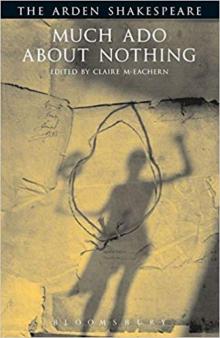 Much Ado About Nothing (Arden Shakespeare: Third Series)
Much Ado About Nothing (Arden Shakespeare: Third Series) All's Well That Ends Well
All's Well That Ends Well Titus Andronicus & Timon of Athens
Titus Andronicus & Timon of Athens Richard III (Modern Library Classics)
Richard III (Modern Library Classics) Coriolanus
Coriolanus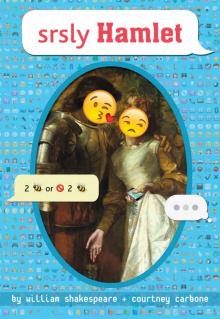 srsly Hamlet (OMG Shakespeare)
srsly Hamlet (OMG Shakespeare) The Merchant of Venice
The Merchant of Venice Richard III
Richard III Richard II
Richard II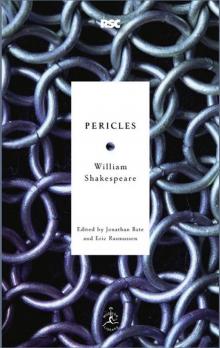 Pericles
Pericles As You Like It
As You Like It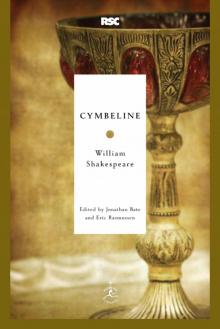 Cymbeline
Cymbeline Alls Wel that ends Well
Alls Wel that ends Well YOLO Juliet
YOLO Juliet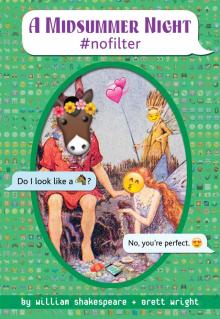 A Midsummer Night #nofilter
A Midsummer Night #nofilter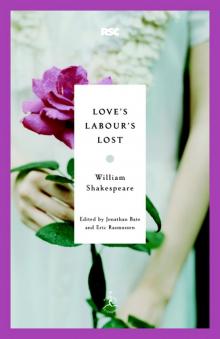 Love's Labour's Lost
Love's Labour's Lost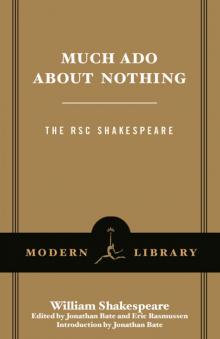 Much Ado About Nothing
Much Ado About Nothing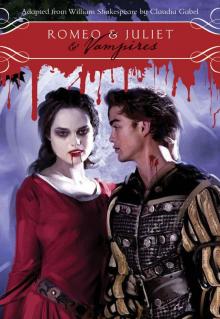 Romeo & Juliet & Vampires
Romeo & Juliet & Vampires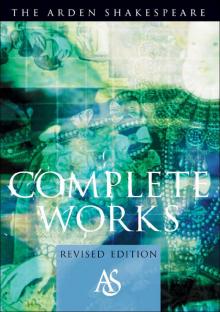 The Arden Shakespeare Complete Works
The Arden Shakespeare Complete Works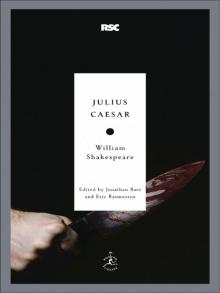 Julius Caesar
Julius Caesar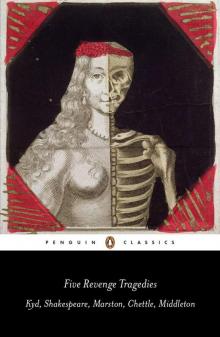 Five Revenge Tragedies: The Spanish Tragedy, Hamlet, Antonio's Revenge, The Tragedy of Hoffman, The Revenger's Tragedy (Penguin Classics)
Five Revenge Tragedies: The Spanish Tragedy, Hamlet, Antonio's Revenge, The Tragedy of Hoffman, The Revenger's Tragedy (Penguin Classics)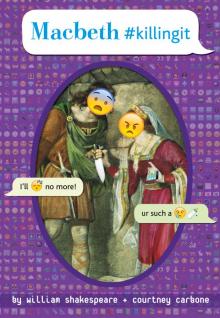 Macbeth #killingit
Macbeth #killingit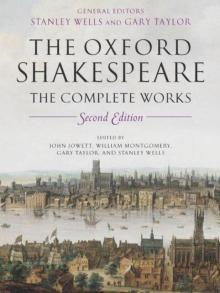 The Oxford Shakespeare: The Complete Works
The Oxford Shakespeare: The Complete Works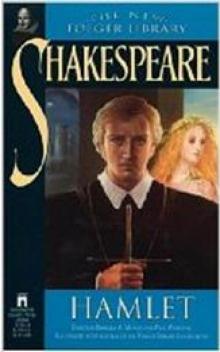 Hamlet, Prince of Denmark (Collins edition)
Hamlet, Prince of Denmark (Collins edition) King John & Henry VIII
King John & Henry VIII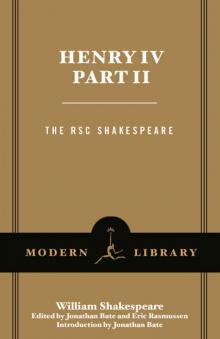 Henry IV, Part 2
Henry IV, Part 2 Complete Plays, The
Complete Plays, The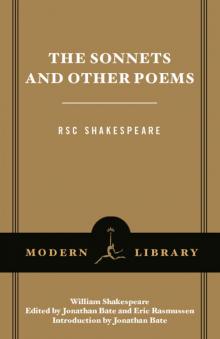 The Sonnets and Other Poems
The Sonnets and Other Poems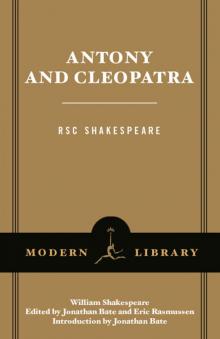 Antony and Cleopatra
Antony and Cleopatra Henry IV, Part 1
Henry IV, Part 1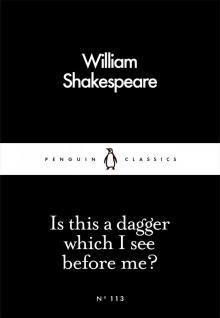 Is This a Dagger Which I See Before Me?
Is This a Dagger Which I See Before Me? The Complete Works of William Shakespeare In Plain and Simple English (Translated)
The Complete Works of William Shakespeare In Plain and Simple English (Translated) The Sonnets
The Sonnets